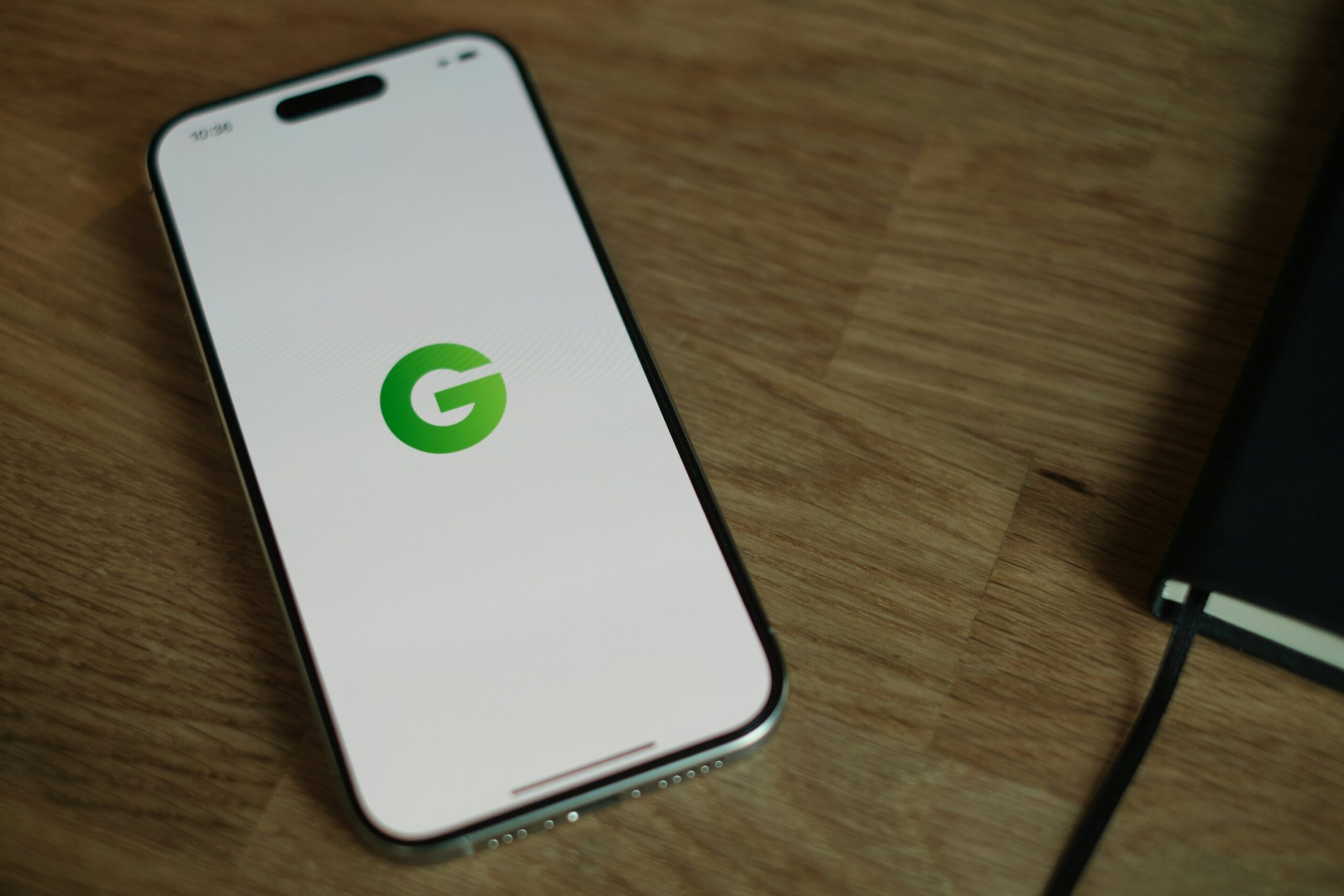Tech
Chicago tech entrepreneur Eric Lefkofsky has launched six unicorns, building a legacy far beyond Groupon

Since the dawn of the new millennium, there have been at most several thousand startup tech companies across the U.S. that have achieved unicorn status—crossing the $1 billion valuation.
Eric Lefkofsky, 55, the Chicago-based serial entrepreneur best known for co-founding online daily deals site Groupon, has given rise to six of them, evolving from discount coupons for pedicures to potentially lifesaving cancer treatments using artificial intelligence.
For most Chicagoans, however, the soft-spoken Lefkofsky remains something less than a household name, a billionaire entrepreneur whose brand is not emblazoned on a skyscraper, despite helping to put the city on the tech world map.
“He’s been a huge force in Chicago,” said Howard Tullman, a Chicago venture capitalist and the former CEO of 1871, the city’s influential tech hub. “This is not a guy who spent a lot of time chasing recognition, and he’s been a little bit below the radar. And I think that’s really particularly admirable.”
While unicorns are far more plentiful now than when venture capitalist Aileen Lee coined the mythical appellation in 2013, Lefkofsky remains a rarity in Chicago tech circles and beyond, launching and nurturing a diverse portfolio of big ideas brought to life.
For much of Lefkofsky’s remarkable run, the startups have been developed at 600 W. Chicago Ave., the century-old former Montgomery Ward Catalog building, which became known colloquially as the Groupon building with the stratospheric rise of the e-commerce website.
At one point, Lefkofsky’s various ventures occupied more than three-fourths of the massive 1.65 million-square-foot building in the Goose Island neighborhood along the Chicago River.
Founded in 2008, Groupon, which once spurned a $6 billion takeover offer from Google on its way to a $25 billion valuation, has fallen in recent years to a fraction of its previous worth amid sharp revenue declines. In January 2024, a downsizing Groupon moved to smaller digs downtown, leaving a 300,000-square-foot hole in the onetime nexus of the Chicago tech scene.
Once its largest shareholder with a 40% stake, Lefkofsky stepped down from an active leadership role at Groupon in 2015 and has since pared his holdings to just under 10%.
But Lefkofsky is still hard at work inside the building where the online daily deals site was born, fully invested in developing the next big thing.
Besides Groupon, the list of billion-dollar startups founded by Lefkofsky includes InnerWorkings, Echo, Mediaocean and Pathos AI. In recent years, most of his time, money and energy have been focused on Tempus, an AI-powered health care technology company he founded in 2015 to treat cancer and other diseases.
Lefkofsky serves as CEO of Tempus, a publicly traded company with 4,000 employees, offices and labs across the country and a market cap of more than $13 billion. More than any other company in his portfolio, the mission is personal to Lefkofsky, who started Tempus after his wife was diagnosed with breast cancer.
“In the process of her treatment, I ended up deciding that I really wanted to focus on this space, and spend the rest of my career thinking about cancer, how to bring technology to cancer care,” Lefkofsky said during a recent visit to Tempus headquarters, a bustling office and laboratory space that occupies 217,000 square feet of the former Montgomery Ward/Groupon building.
More than 1,000 employees circumnavigate the bustling fifth floor Tempus office around an atrium that Lefkofsky said was a spiral parking ramp before the building—a National Historic Landmark that once housed the country’s oldest mail-order firm—was converted to tech space 25 years ago.
The Tempus workforce is a melange of techies, scientists, oncologists and pathologists, all blended together with the same goal: using AI to better treat cancer.
“What’s unique about Chicago is that we have a little bit of everything,” Lefkofsky said, navigating seamlessly between the worlds of technology and science on a tour of his sprawling office.
There are two main areas of focus for Tempus.
In the life sciences realm, the company is analyzing molecular and clinical data with the help of artificial intelligence to facilitate drug research and development. Tempus is also pioneering new technology such as biological modeling, where “mini-tumors” are regrown from lab samples to test the efficacy of drugs.
The other half of the business for Tempus is clinical genomic sequencing, where tissue from cancer patients is shipped into the lab from all over the U.S. and analyzed using artificial intelligence to personalize treatment based on molecular biomarkers.
Half of the nation’s 14,000 or so oncologists regularly order sequencing tests from Tempus, Lefkofsky said. Tempus is one of the largest genomic sequencing companies in the country, helping doctors identify mutations to inform cancer treatment decisions, he said.
“When we started Tempus 10 years ago, maybe 10% of the patients were sequenced,” he said. “Today it’s over 50% in the United States, and soon it will be 100%. It’s just standard care.”
Lefkofsky has poured $100 million into Tempus, which has yet to turn a profit. He is confident that is about to change.
Tempus reported nearly 90% year-over-year revenue growth during its second quarter earnings report Aug. 8, raising its full-year 2025 revenue guidance to $1.26 billion. The company, whose stock price has more than doubled this year, is projecting a positive adjusted EBITDA of $5 million for 2025.
Beyond seed money, growing Tempus from a startup to a $13 billion company has also required a lot of sweat equity from Lefkofsky.
“It was not a small amount of money that I ended up putting into a series of rounds,” he said. “But more than the capital, it’s been kind of all-consuming for the last 10 years of my life.”
He was pretty busy before Tempus as well.
In addition to the six unicorns, Lefkofsky co-founded venture capital firm Lightbank. His startup success has made him the 643rd richest person in the world with a net worth of $5.9 billion, according to the Forbes real-time billionaires list.
A Detroit native, Lefkofsky earned a bachelor’s and a law degree at the University of Michigan before making his mark on the Chicago tech scene.
In the wake of the dot.com bubble burst, Lefkofsky launched a string of startups, beginning with InnerWorkings, a printing technology company he founded in 2001. Two years later, Lefkofsky moved InnerWorkings into 600 W. Chicago, the hulking former warehouse that had been recently redeveloped as a tech center.
“When I came to the building, it was about 90% vacant—and most of these floors were concrete for parking,” Lefkofsky said. “There were maybe one or two built floors and they were maybe half built, and we took some space with InnerWorkings.”
With plenty of room to grow, Lefkofsky and his portfolio soon did.
In 2005, he co-founded Echo Global Logistics with longtime business partner Brad Keywell, using technology to drive freight transportation. The company went public in 2009, growing into a multibillion-dollar logistics giant.
Next up, Lefkofsky and Keywell founded MediaBank in 2006, an advertising technology startup that evolved into Mediaocean through a 2012 merger with a New York-based rival.
Then came Groupon, an e-commerce launch that has become almost mythic in its arc.
In 2007, Andrew Mason, then a recent Northwestern University music grad, started a website called The Point with $1 million in seed money from Lefkofsky. The initial concept was to bring together people with a common cause to take action, but the mission soon pivoted to a daily deals retailing site, and Groupon was born.
Groupon created its own e-commerce niche with heavily discounted daily deals on everything from manicures to meals, blasted out to subscribers via email. It exploded in popularity and employment grew from a handful to more than 10,000 worldwide as the company’s valuation blossomed into the billions.
Google tried to purchase Groupon for nearly $6 billion in 2010, but Mason and his investors said no deal. By 2011, Groupon was valued at $25 billion, and the company went public, raising $700 million in the largest tech initial public offering since Google.
From an investor standpoint, it has been mostly downhill from there.
Operating losses, management missteps—including a disastrous 2011 Super Bowl ad— and a rapid post-IPO decline in valuation led to the 2013 ouster of Mason as CEO.
In August 2013, Lefkofsky was named CEO of Groupon. But one year into his new role, Lefkofsky’s life changed when his wife, Liz, was diagnosed with breast cancer. By 2015, he stepped down as CEO at Groupon and started Tempus.
Ten years later, Lefkofsky said his wife is “doing well” and Tempus is thriving at the intersection of technology and medicine.
In this case, necessity was both the mother of invention—and their three children.
“The work we did to try to figure out how to treat her was actually personalized using data, and so it ended up producing a good outcome,” Lefkofsky said. “So in many ways, she was Patient One of Tempus.”
From the outset, Tempus employed artificial intelligence to analyze medical data—long before the term, and the technology, came into widespread use.
As the ability to use AI in health care at scale gains momentum, the opportunity for Tempus to become a standard diagnostic tool and an integral part of mainstream medicine continues to ramp up, Lefkofsky said.
“We’re helping tens of thousands of patients around the country manage their cancer care, and we’ve expanded it to other disease areas such as cardiology and neurology,” Lefkofsky said. “It’s just good to see a lot of the roots we planted take hold.”
Living up to his company’s name—tempus means time in Latin—Lefkofsky somehow manages to find enough time for a number of the city’s civic and cultural organizations.
Longtime Glencoe residents, Lefkofsky and his wife are actively engaged in philanthropic pursuits, establishing an eponymous family foundation in 2006. He has also served on a number of boards, including Steppenwolf Theater Company, Lurie Children’s Hospital and World Business Chicago.
“I think he’s been a tremendous entrepreneurial influence, and I think that he’s also been maybe even more impressive, frankly, on the philanthropic side,” Tullman said.
In November, the Art Institute named Lefkofsky as its new board chairman, putting the tech billionaire in charge of overseeing the museum, the school and an ambitious plan to usher in an era of new development at the historic South Michigan Avenue campus.
His new role came with some unexpected drama when the museum’s director, James Rondeau, returned from a voluntary leave in June following a board investigation into an incident where he removed his clothes and disrupted a United Airlines flight to Germany.
“As a board, we were thrilled to have him back and thrilled just to be moving forward,” Lefkofsky said.
Meanwhile, his day job may be entering a new phase as fledgling companies leave the nest and head off on their own—faster than new ones launch.
InnerWorkings, Echo and Mediaocean have all been acquired by private equity firms. Czech investor Dusan Senkypl, now the largest stakeholder in Groupon, took the helm of the struggling daily deals site and last year moved the company to a smaller space in the Leo Burnett Building on Wacker Drive as part of a larger cost-cutting initiative.
Pathos AI, a Chicago-based biotech startup Lefkofsky co-founded with Tempus COO Ryan Fukushima in 2020, gained unicorn status in March with a $365 million round of funding that brought its valuation to $1.6 billion. Its day-to-day management is vested in other hands.
Pathos, Echo and Tempus still call 600 W. Chicago Ave. home.
Lefkofsky continues to focus on building Tempus, which in late August announced the acquisition of Paige, an AI company specializing in digital pathology. The $81 million deal is mostly being paid with Tempus common stock.
With six unicorns under his belt, Lefkofsky is not ready to give up the CEO’s role at Tempus anytime soon.
“I think my focus over the next several years is just running Tempus and making sure that it delivers on its mission,” Lefkofsky said.
As to the prospects of starting unicorn No. 7 down the road, Lefkofsky didn’t rule it out.
“I don’t have any plans to start another company,” he said. “But every once in a while, you know, things come up and you get excited.”
2025 Chicago Tribune. Distributed by Tribune Content Agency, LLC.
Citation:
Chicago tech entrepreneur Eric Lefkofsky has launched six unicorns, building a legacy far beyond Groupon (2025, September 4)
retrieved 4 September 2025
from https://techxplore.com/news/2025-09-chicago-tech-entrepreneur-eric-lefkofsky.html
This document is subject to copyright. Apart from any fair dealing for the purpose of private study or research, no
part may be reproduced without the written permission. The content is provided for information purposes only.
Tech
WIRED Roundup: DOGE Isn’t Dead, Facebook Dating Is Real, and Amazon’s AI Ambitions

Leah Feiger: So it’s a really good question actually, and it’s one that I’ve thought about for quite some time. I think if it’s not annoying, I want to read this quote from Scott Kupor, the director of OPM and the former managing partner at Andreessen Horowitz, to be clear, just to remind everyone where people are coming from in this current administration. He posted this on X late last month, and this was part of Reuter’s reporting. So he posts, “The truth is, DOGE may not have centralized leadership under USDS anymore, but the principles of DOGE remain alive and well, deregulation, eliminating fraud, waste and abuse, reshaping the federal workforce, et cetera, et cetera, et cetera.” Which is the exact same, the thing that they’ve been saying this entire time, but it’s all smoke and mirrors, right? It’s like, oh no, no, well, DOGE doesn’t exactly exist anymore. There’s no Elon Musk character leading it, which Elon Musk himself said on the podcast with Joe Rogan last month as well. He’s like, “Yeah, once I left, they weren’t able to pick on anyone, but don’t worry, DOGE is still there.” So it feels wild to watch people fall for this and go like, “DOGE is gone now.” And I’m like, they’re literally telling us that it’s not.
Zoë Schiffer: I think one thing that does feel honestly true is that it is harder and harder to differentiate where DOGE stops and the Trump administration begins because they have infiltrated so many different parts of government and the DOGE ethos, what you’re talking about, deregulation, cost cuttings, zero-based budgeting, those have really become kind of table stakes for the admin, right?
Leah Feiger: I think that’s such a good point. And honestly, by the end of Elon Musk’s reign, something that kept coming up wasn’t necessarily that the Trump administration didn’t agree with DOGE’s ethos at all. It was that they didn’t really agree with how Musk was going about it. They didn’t like that he was stepping on Treasury Secretary Scott Bessent and having fights outside of the Oval Office. That was bad optics and that also wasn’t helping the Trump administration even look like they were on top of it.
Tech
Horses, the Most Controversial Game of the Year, Doesn’t Live Up to the Hype

The debate over Horses’ delisting is emblematic of a bigger fight that’s taken place this year, when platforms such as Steam and Itch.io yanked down “NSFW” and “porn” games in July. Developers, players, and trade organizations have continued to be vocal about developers’ creative rights to make games that deal with adult content.
“Developers shouldn’t have to compromise their creative vision, but we also have to acknowledge that games exist within capitalist structures where access to platforms determines livelihood,” says Jakin Vela, executive director of the International Game Developers Association, a nonprofit supporting game developers. “The key is informed decision-making and understanding what each platform allows, what risks exist, and whether your artistic goals outweigh those risks.”
Still, Vela says, these removals have exposed the fragility of developers’ economic security. “We should be concerned whenever a system allows a creator’s livelihood to be cut off without transparency or recourse,” he says. The video game industry is highly consolidated, with a handful of platforms controlling access to the vast majority of players. “That imbalance creates a structural issue, not necessarily because platforms enforce rules, but because there are so few viable alternatives.”
Santa Ragione’s future should not hinge on its ability to exist on Steam or any other platform. A bad project should not spell the end of a developer who is, for all the criticisms I have of its game, trying to say something. That part of this story may still yet have a happy, or at least a survivable, ending. The Streisand effect is paying off for Horses. On the digital distribution platform GOG, where it’s still available, the game is a top-seller.
Horses needs to be defended against censorship. It is also a bad game that should be examined as such. But while the conversation around Horses is still stalling out about why the game is allowed to exist, or how it’s not that offensive, the better question is why we really care about it at all—and why, as players, we feel so reluctant to talk about its failings like any other piece of media.
Tech
Silk & Snow Seemingly Cannot Miss—So Don’t Skip This Sale That Ends in 2 Days

I try to test every individual product critically and neutrally, but sometimes a brand comes along that seemingly cannot miss. We have liked everything we’ve tried from Silk & Snow, and right now the company is hosting a Cyber Week Sale that runs through December 7. You can save on some of our favorite bed frames and mattresses that we’ve tested long-term in our own homes, and if you prefer to browse on your own, the sale offers up to 35 percent off site-wide. I’ve rounded up the highlights on WIRED-tested gear below.
WIRED Featured Deals:
Silk & Snow Bed Frame With Drawer Storage for $560 ($140 off)
In our Bed Frame Buying Guide, I say that Silk & Snow could charge more for this bed frame—but right now, it’s 20 percent off. Assembly is a little bit annoying. But the fabric-covered headboard is gorgeous, and the frame is sturdy. My favorite part is the drawer cleverly concealed at the foot of the frame, with its two partitions and its magnetic closure. It does feel a little jarring if you open and close the drawer while your partner is in bed, but I like having extra storage in my room, especially since this frame is too low to the ground to allow for stashing things under it.
Silk & Snow S&S Organic Mattress for $765 ($235 off)
The S&S Organic Mattress is the best organic latex mattress. It’s very soft and offers a lot of pressure relief and support, but the responsive material means it’s better suited to solo sleepers than it is to couples. It feels like a soft, dense marshmallow, per our sleep reviewer Julia Forbes, who advises using lightweight blankets and cooling sheets if you’re a hot sleeper and also raved about the lengthy year-long sleep trial. As part of the Cyber Week sale, you can choose between a free sleep bundle (with a sheet set, a duvet, two microfiber pillows, and a mattress protector) or you can opt out of the bundle to get an extra 10 percent off your mattress.
Silk & Snow Wooden Bed Frame for $1,040 ($260 off)
This bed frame from Silk & Snow made our list of the best Thuma dupes. The Japanese joinery platform frame comes in your choice of natural rubber wood or cortado acacia wood, each in two different finishes. Assembly is pretty easy and doesn’t require any special tools, and you’ll get a robust five-year warranty. The resulting frame is sturdy and gorgeous, though we recommend having a helper around if you need to disassemble the frame to protect the finish on the wood.
Power up with unlimited access to WIRED. Get best-in-class reporting and exclusive subscriber content that’s too important to ignore. Subscribe Today.
-

 Tech6 days ago
Tech6 days agoGet Your Steps In From Your Home Office With This Walking Pad—On Sale This Week
-

 Sports5 days ago
Sports5 days agoIndia Triumphs Over South Africa in First ODI Thanks to Kohli’s Heroics – SUCH TV
-

 Fashion5 days ago
Fashion5 days agoResults are in: US Black Friday store visits down, e-visits up, apparel shines
-

 Entertainment5 days ago
Entertainment5 days agoSadie Sink talks about the future of Max in ‘Stranger Things’
-

 Tech5 days ago
Tech5 days agoPrague’s City Center Sparkles, Buzzes, and Burns at the Signal Festival
-

 Politics5 days ago
Politics5 days agoElon Musk reveals partner’s half-Indian roots, son’s middle name ‘Sekhar’
-

 Sports5 days ago
Sports5 days agoBroncos secure thrilling OT victory over Commanders behind clutch performances
-

 Sports5 days ago
Sports5 days agoF1 set for final-race showdown as Verstappen exploits McLaren blunder | The Express Tribune























